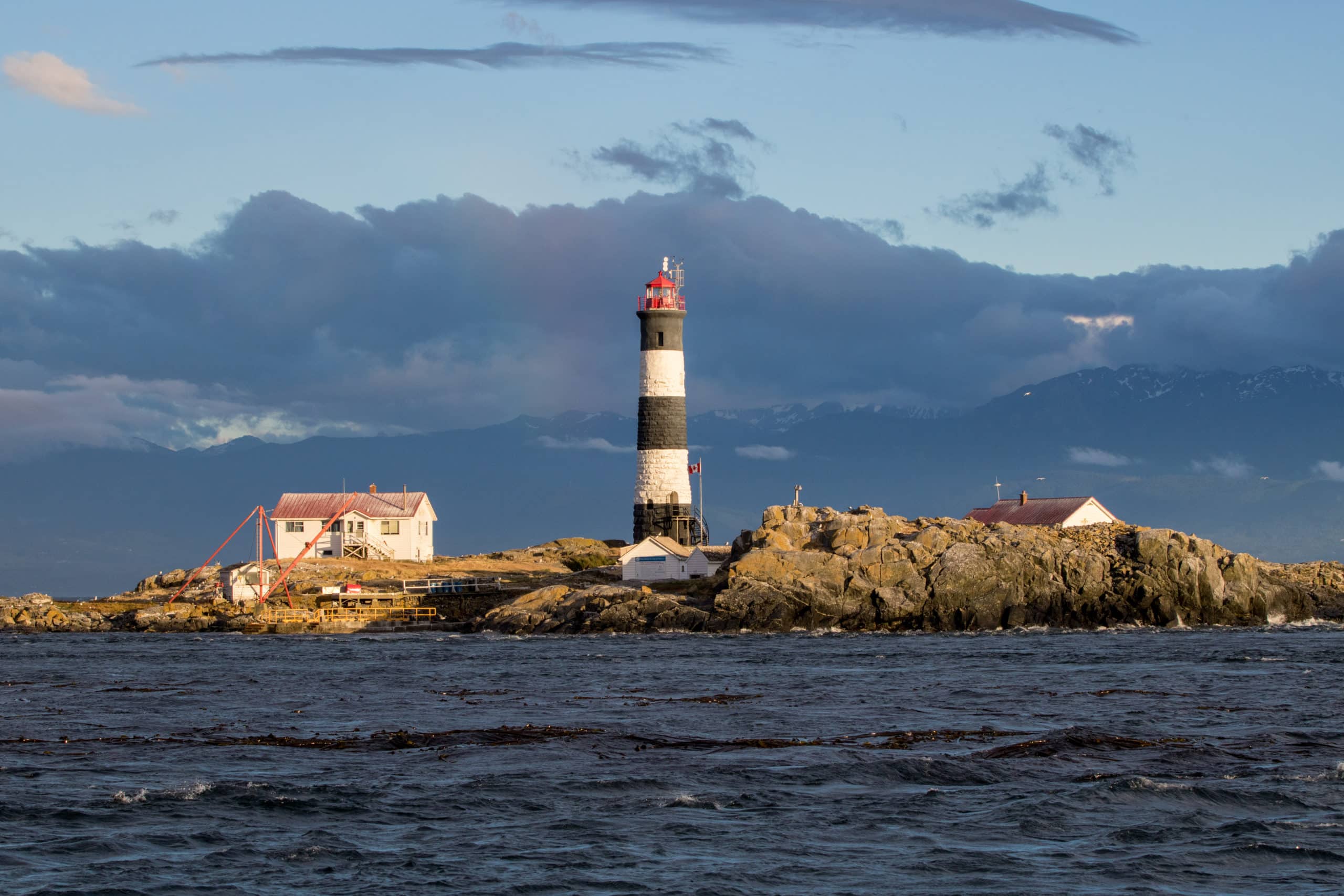Race Rocks Ecological Reserve and Marine Protected Area is an iconic grouping of small islands nestled nine nautical miles west of the Victoria Harbour.
It is a place we visit on many tours when we are searching for whales in the Juan de Fuca Strait. Not only is the lighthouse itself stunning and historical, but the location is also home to flourishing populations of Harbour Seals, California and Steller Sea Lions, and a growing presence of Elephant Seals.
Many other species catch your eye when visiting the area including the famous Ollie, our one and only local Sea Otter, fishing Bald Eagles, charismatic Oyster Catchers, striking Pigeon Guillemots, and massive Bull Kelp forests just to name a few.
Whales of all species are often spotted around Race Rocks including both Bigg’s and Southern Resident Orcas, Humpbacks, Grey Whales, and Dall’s and Harbour Porpoises. For many guests, visiting Race Rocks is an unexpected highlight of their trip!
The Building of an Icon
Race Rocks Lighthouse was built in 1860 and is the second oldest lighthouse on the Canadian Pacific coast. It cast its first beam of light on December 26, 1860.
It is the only lighthouse on BC’s coast that is constructed of stone. Most of the stone that makes up the tower was quarried in Scotland, while the top third is made from sandstone from nearby Gabriola Island.
One of the most striking features of the lighthouse is its black and white stripes, something no other nearby lighthouses have.
The Canadian Coast Guard automated the lighthouse in 1997. Victoria-based Pearson College continues to staff the station.
Fun Lighthouse Facts
- The black-and-white striped tower stands 24.4 m (80 feet) tall.
- The white light flashes every 10 seconds in the dark.
- The foghorn sounds 3 blasts at one-minute intervals when the fog rolls in.
- Tides can rip through Race Rocks at 6-8 knots, which is the reason for the name “Race” Rocks Lighthouse- the water races through the area!
- The waters surrounding the islands of Race Rocks Ecological Reserve are known to be one of the best cold-water dive sites in the world, teeming with colourful and diverse lifeforms below the surface.
A History of Tragedy
In its over 160 years of existence, Race Rocks has been a site of tragedy and loss. There are too many stories to fit into this one blog, but here are some details about the dark history of shipwrecks and disasters that occurred here.
December 23rd, 1860: Three days before the lighthouse was first functional, the Nanette, a 385-ton cargo boat was carrying $165,000 worth of goods to Victoria. It was swept by the tides onto the rocky ledges at Race Rocks and the vessel was destroyed. All on board were rescued by the construction workers completing the lighthouse.
December 26th, 1865: George Davies, the first lighthouse keeper, and his wife Rosina were excited about the arrival of her brother, his wife, and three friends to the tiny island. As the vessel they were on approached, it overturned and George & Rosina had to watch helplessly as their family and friends drifted away and disappeared under the waves. There was no boat on the island for them to use to help save the helpless passengers.
December 1866: George Davies falls ill. His wife lowered the flag to half-mast to attract a vessel as this was a distress signal. Over the next nine days, no ships took note of the flag. George died two weeks after first getting sick.
July of 1888: Thomas Argyle was the second lighthouse keeper at Race Rocks from 1866 to 1888. In July of 1888, Argyle’s son, Albert, took over his father’s position. Thomas decided to visit his son at Race Rocks. He set out in a rowboat with three young men. He was so anxious to see his family, he ignored warnings of a powerful westerly gale that was blowing over the strait. The rowboat Argyle and the young men were in was recovered the next morning with just one dead body, the rest were lost to the sea.
1950: Lighthouse keeper Arthur Anderson set off from Rocky Point near Victoria in a 14-foot boat to return to Race Rocks after a mail and supplies run. A severe storm set in and he never returned. His boat and body were never found.
Race Rocks Lighthouse has an amazing history and continues to be a place of discovery and adventure. With stunning surrounding scenery, abundant wildlife, and an ever-changing environment, this special place continues to be a favourite spot to take guests from around the world.
Ready to check out Race Rocks yourself?
You can log on to the Race Rocks Lighthouse website and control any of three cameras to view the sites and wildlife in realtime from anywhere in the world!
We think the best way to experience the wonders of this special place is to join us on a whale watching tour from Victoria. Book today!









